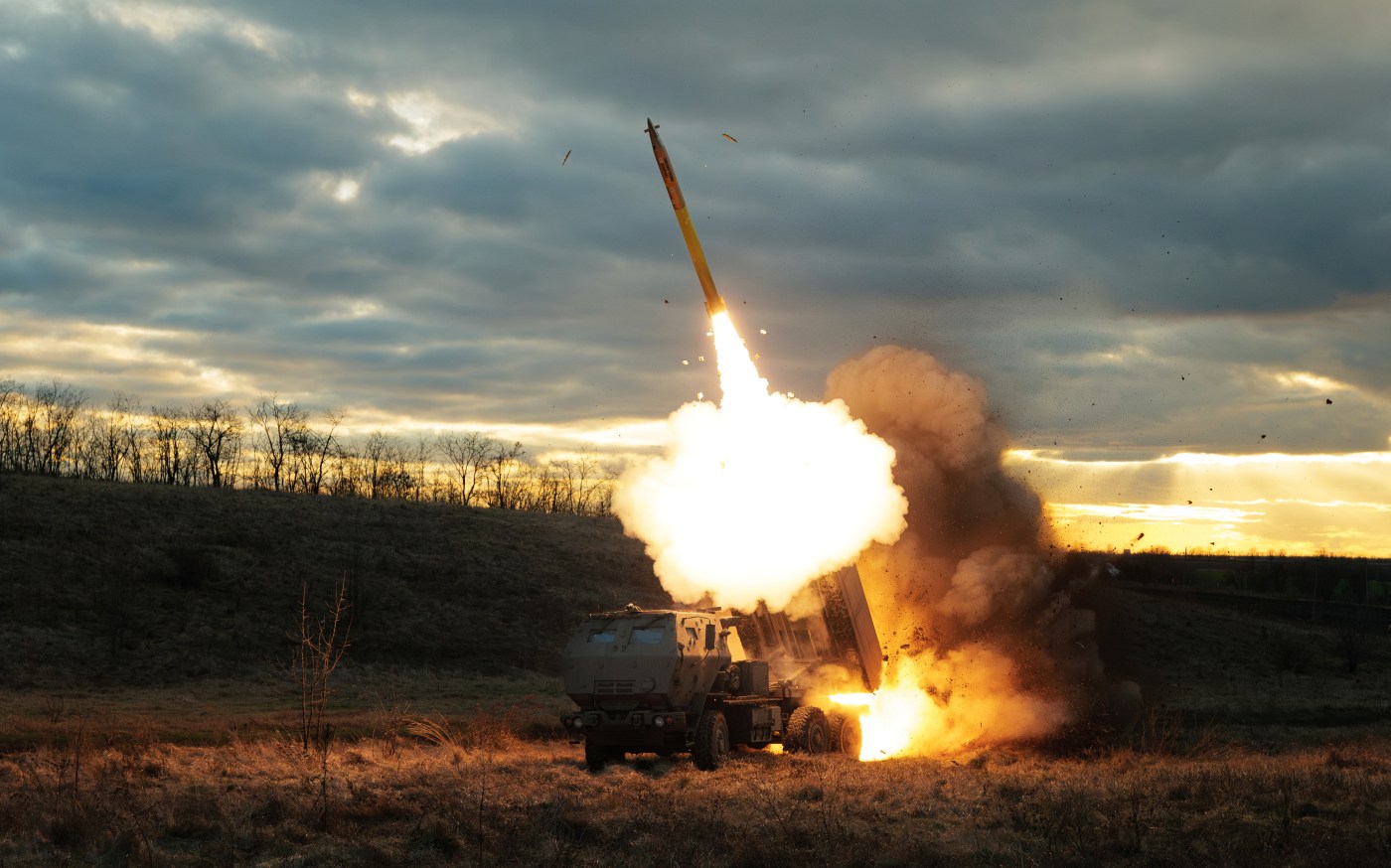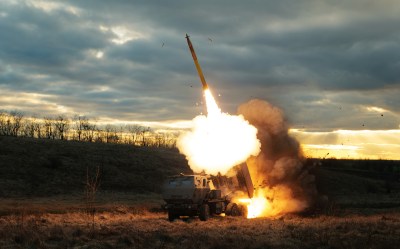One of the most consequential parts of the recently passed supplemental aid package for Ukraine, Israel, and Taiwan is a little-noticed provision that requires the Biden administration to submit a strategy to Congress regarding U.S. support for Ukraine. Notably, for the first time since Russia’s full-scale invasion began, the Biden administration will be mandated to present an assessment “of the resources required … to help hasten Ukrainian victory against Russia’s invasion forces.”
Although a loud minority of lawmakers opposes any aid to Ukraine, this requirement in the legislation reflects a bipartisan concern of many in Congress that the administration’s oversensitivity to “escalation” has restricted the provision of more effective weapon systems Ukraine has requested and has limited the use of some U.S. weapons provided, contributing to Ukraine’s disadvantage on the battlefield and the current bloody stalemate. The new law makes clear that Congress wants a plan for Ukraine to win, not merely survive. The administration should embrace it.
Section 504 of the supplemental mandates “a classified independent assessment from the Commander, U.S. European Command, describing any specific defense articles and services not yet provided to Ukraine that would result in meaningful battlefield gains” within 45 days. Having heard from U.S. commanders in congressional briefings—and in Germany and Poland during a dozen or more trips to Ukraine—I’m confident that if the Biden administration allows military judgment to prevail, its response will point the way to breaking the stalemate in Ukraine’s favor.
With the correct approach, the administration has an opportunity to give Ukraine an advantage on the battlefield and bring this unprovoked, illegal, and brutal Russian attack to an end, forcing Vladimir Putin to the negotiating table from a position of weakness. Investing in Ukraine’s capabilities on the battlefield will help create leverage that both the United States and Ukraine will need in those eventual peace talks.
Among the opponents of providing assistance to Ukraine are those who cling to unrealistic and convenient arguments that somehow, if America pulls back, Vladimir Putin will come to the bargaining table, and Ukraine can remain a free, independent democracy. There is simply no evidence in the history of aggression by dictators or in the words or deeds of Vladimir Putin to support this argument. Russia’s best theory of victory in this war depends on the exhaustion of America’s support for Ukraine. Pulling back our assistance will only help fulfill Putin’s dreams of conquest and empire.
The only realistic way to end the conflict is to provide Ukraine with the weapons it needs to win on the battlefield and inflict enough pain on Russia that a favorable settlement is possible. Approving one or two badly needed weapons in small numbers, after long delays, has not had the battlefield impact Ukraine needs. Rather, the Biden administration must redouble our coordination with our European allies to provide a suite of capabilities that can be employed together to achieve maximum results.
Putin will come to the table in good faith only when he knows that he cannot wait us out. I agree that European allies can do more to support Ukraine’s war effort, although they have actually contributed more than many Americans may realize. With the passage of the new supplemental funding bill, total U.S. commitments are now about $173 billion. As a bloc, the European Union’s total assistance commitments to Ukraine currently stand at roughly $155 billion. Even so, American leadership is essential to sustaining this progress and making European military assistance, in particular, more impactful and durable.
At this point, I believe the U.S. commitment to move quickly to provide Ukraine with the weapons it needs and the training to use them effectively is just as important as the dollar amount of aid provided. The same scenario has played out time and time again: Ukraine requests a particular weapon, the Biden administration initially says no, then eventually provides it after months—or years—of bipartisan congressional pressure. Inevitably, the weapon quickly makes a significant difference: Stinger missiles early in the conflict, HIMARS two years ago, and longer-range ATACMS missiles more recently. Think of all of the lives that could have been saved if we had provided those weapons systems earlier.
Russia’s air force is currently bombarding civilian targets every day, and Ukraine needs F-16 fighter jets as soon as possible to stave off those attacks. But that requires more than just supplying U.S. planes: It means expediting and expanding the training already underway, as well as the issuing of licenses to allies around the world who are willing and able to provide such aircraft to Ukraine but need our permission. Based on recent reports, it seems that operational F-16s will be slowly trickling into Ukraine later this year, meaning that they may not make a significant impact until at least 2025. Sadly, this is emblematic of the administration’s slow-walking of assistance to Ukraine. Had the administration acted sooner, F-16s would already be protecting Ukraine’s skies against the deadly Russian attacks on civilians and infrastructure.
On the ground, Ukraine needs tanks to punch through Russian lines and retake territory. Some American M1A1 Abrams tanks have been provided, along with British Challengers and a larger number of German Leopards. They have proven effective, but there are not enough. After more than a year of stalling, the United States only provided about 31 tanks—a token gesture seemingly designed to pressure the Germans into providing Leopards. We have hundreds more that could be routed to Ukraine from allies or our own stocks.
One of the biggest sticking points has been long-range missiles capable of striking critical logistics and command nodes behind Russian lines. Ukraine has asked for them for two years, and reports indicate that the U.S. has supplied a small number of such missiles. More ATACMS missiles and other long-range missiles are desperately needed. In fact, Congress included an explicit requirement in the supplemental that the administration provide more of these missiles. But the administration currently places onerous conditions on their use out of concern of escalation. British Foreign Minister David Cameron’s recent announcement that the United Kingdom would allow Ukraine to use UK-supplied long-range Storm Shadow missiles against Russian territory is a welcome development, and the U.S. should follow it. Russia has attacked Ukraine from Russian territory since Day 1. The administration must allow Ukraine to defend itself.
Next, Ukraine’s air defense needs to be bolstered immediately. Ukraine needs long-range air defense systems, like Patriots, to defend against the Russian- and North Korean-made ballistic missiles and Iranian-made drones raining down on Ukrainian cities. America’s enemies have redoubled their support for Russia’s terror-bombing campaign, so America and our allies must unite to stop it. NATO Secretary-General Jens Stoltenberg noted recently that NATO countries have the spare capacity to provide more air defense missiles; all that’s needed is the political will to do so. This is also true for short-range air defense systems to defend against both the ubiquitous Russian drones as well as Russian strike aircraft near the frontlines, which have taken advantage of Ukrainian air defense missile shortages to significantly increase their deadly attacks.
In particular, Ukraine desperately needs more sophisticated electronic warfare (EW) systems to counter Russian “first-person view” or “kamikaze” drones. This new breed of relatively inexpensive but deadly drones has been used to devastating effect by both sides in this war, destroying vehicles and equipment that are orders of magnitude more expensive than the drones themselves. Bolstering Ukraine’s EW capabilities would enable it to disable and disorient more Russian FPV drones, thus better protecting Ukrainian forces and preserving their combat power for future offensive operations.
The administration should also increase the number of cluster munitions sent to Ukraine, particularly the 155mm dual-purpose improved conventional munition (DPICM). First provided in July 2023 following months of Ukrainian requests and pressure from Congress, DPICMs have been a major game-changer on the ground—often stopping Russian infantry assaults in their tracks. Originally built during the Cold War to counter the Soviet Union’s numerical superiority in artillery, the United States has about 3 million of these cluster munitions in storage and could easily send more. These would be invaluable to bolstering Ukraine’s low stockpiles of artillery ammunition and blunting future Russian assaults.
A successful effort requires more than equipment and munitions: We cannot neglect the importance of training for Ukrainian soldiers. State-of-the-art equipment means little in the hands of ill-trained recruits, uncoordinated units, or poorly commanded armies. Ukraine recently passed a mobilization law to conscript thousands of new troops to refill its ranks and form new units for future offensive operations. Training these new conscripts to realistically prepare them for combat and teach them how to conduct complex offensive operations requires that the U.S. and its allies redouble their efforts.
Finally, it is important to help Ukraine’s defense industry recover so it can eventually sustain its own needs. The Ukrainians have been remarkably innovative in adapting U.S.-provided equipment to suit the conditions and developing their own new capabilities, particularly in areas like drone warfare. Significant opportunities exist for U.S. companies willing to invest in Ukraine, and relevant agencies like the U.S. International Development Finance Corporation (DFC) should be more aggressive in helping them do so.
Through the recently passed supplemental, Congress made it clear, in bipartisan fashion, that it wants to hear from the Biden administration how to change the dynamic on the battlefield in Ukraine’s favor. All we need now is for the administration to follow this congressional intent “to hasten Ukraine’s victory against Putin’s war of aggression” by providing Ukraine the weapons it needs to win.





Please note that we at The Dispatch hold ourselves, our work, and our commenters to a higher standard than other places on the internet. We welcome comments that foster genuine debate or discussion—including comments critical of us or our work—but responses that include ad hominem attacks on fellow Dispatch members or are intended to stoke fear and anger may be moderated.
With your membership, you only have the ability to comment on The Morning Dispatch articles. Consider upgrading to join the conversation everywhere.